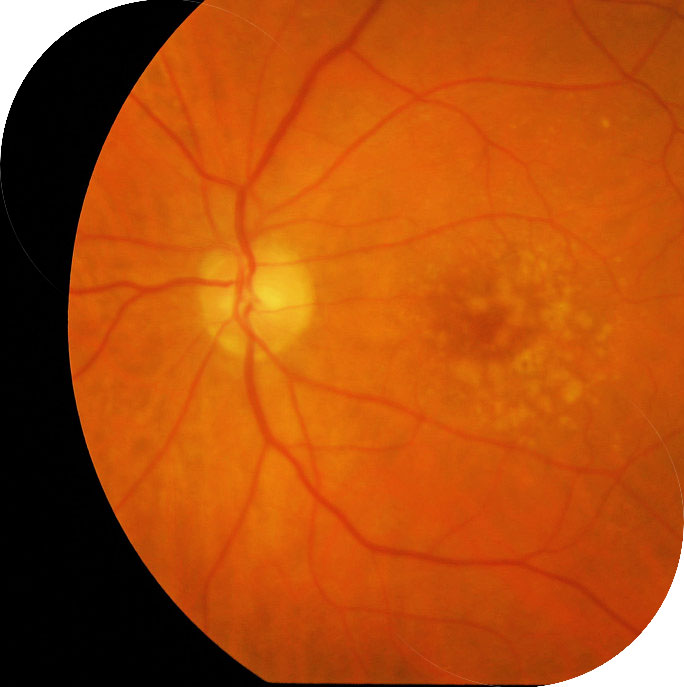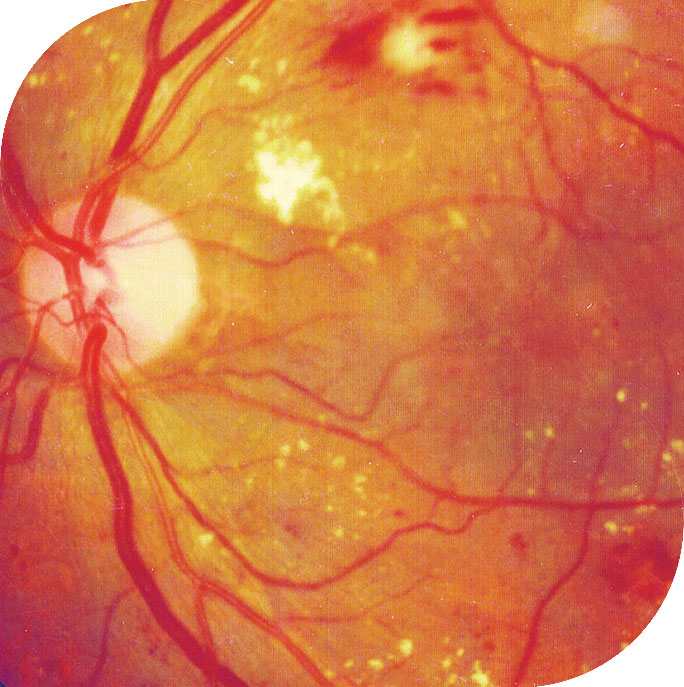
Age-Related Macular Degeneration (ARMD)
ARMD is the leading cause of severe vision loss in adults over 50. The Centers for Disease Control and Prevention estimate that 1.8 million people have ARMD, and another 7.3 million are at risk for vision loss from ARMD. Caucasians are at a higher risk for developing ARMD, and women develop ARMD at a younger age than men.
The disease occurs when there are changes to the macula, a small portion of the retina located on the inside back layer of the eye. ARMD is a loss of central vision that can occur in two forms: dry or wet. Most people have the dry form, for which there is no treatment. The less common wet form may respond to laser procedures, if diagnosed and treated early.

Cataracts
A cataract is a cloudy or opaque area in the normally clear lens of the eye. Depending on its size and location, it can interfere with normal vision. Most cataracts develop in people over age 55, but they occasionally occur in infants and young children. Usually, cataracts develop in both eyes, but one may be worse than the other. Cataracts generally form very slowly.
Signs and symptoms of a cataract may include the following:
- Blurred or hazy vision
- Reduced intensity of colors
- Glare from lights, especially at night
- Decreased night vision
There is no established non-surgical treatment to prevent or slow the progression of cataracts. Treatment is eventual surgical intervention.
Image used under Creative Commons License.

Background Diabetic Retinopathy (BDR)
BDR is a condition occurring in people with diabetes. It causes progressive damage to the retina, the light-sensitive lining at the back of the eye. It is a serious sight-threatening complication of diabetes. Diabetes affects the circulatory system of the retina and causes damage to the tiny blood vessels that nourish the retina. They leak blood and fluids, and that causes swelling of the retina and clouding of vision. The longer a person has diabetes, the more likely he or she will develop BDR. If left untreated, BDR can cause blindness.
Signs and symptoms include seeing spots or floaters, and blurred vision. Sometimes, however, there are no signs or symptoms; this makes an eye exam even more valuable. Treatment includes monitoring of the diet and laser treatment.

Glaucoma
Glaucoma is an eye disorder leading to progressive damage to the optic nerve, resulting in the loss of peripheral vision. The most common form of glaucoma – primary open-angle glaucoma (POAG) – is associated with an increase in the fluid pressure of the eye. This increase of pressure may cause damage to the optic nerve, loss of nerve fibers, and eventual vision loss. Advanced glaucoma may cause blindness. Glaucoma is the second leading cause of blindness in the U.S. It more often occurs in people over 40.
POAG develops slowly and usually without symptoms. By the time people become aware that they have POAG, vision loss has occurred. An eye exam can reveal the presence of
POAG. Treatment includes medication and sometimes surgery.
